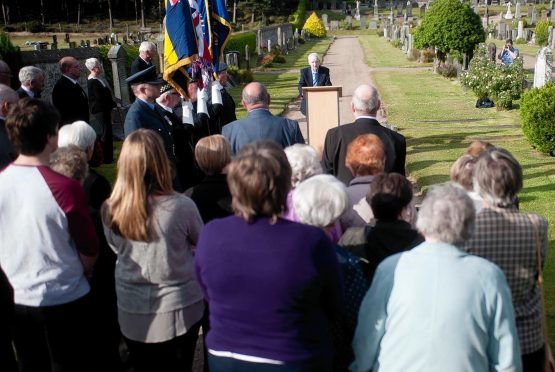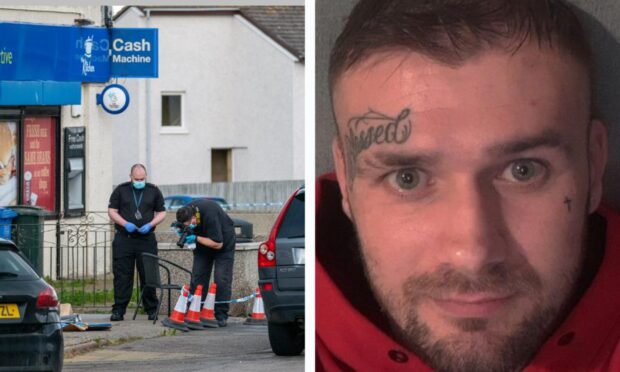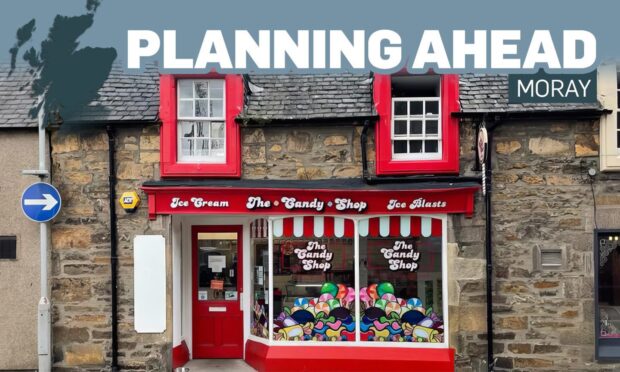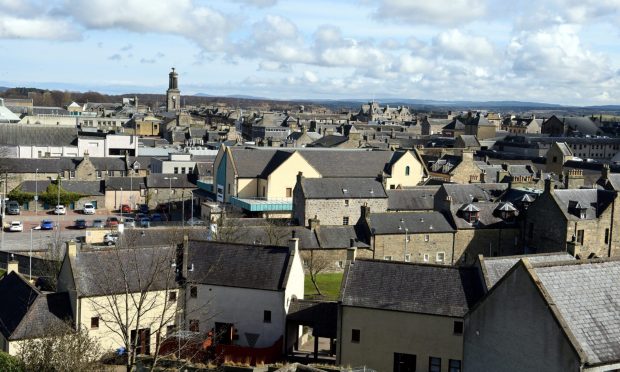Lossiemouth residents last night staged a poignant tribute to mark the 75th anniversary of a World War II bombing raid on the town.
Last night’s ceremony took place by the graves of the four victims of the attack, as local historian Donnie Stewart vowed that the town would never forget the tragedy.
The incident unfolded in the early hours of July 12, 1941, when a lone German JU88 bomber was deployed to the Moray coast.
It is believed the pilot was under orders to strike Lossiemouth’s RAF base, but he instead dropped four bombs over the town – destroying three homes and damaging countless others.
Dunbar Street couple John and Elizabeth Wilson, along with visiting guests Joseph and Clarissa Leighton, were killed in the strike.
Members of the Souter family, on Kinneddar Street, were injured by another bomb while the two remaining devices fell on a pavement in King Street and in a nearby quarry.
The incident was the only bombing raid Moray suffered during World War II, and it has lingered in the memories of those old enough to recall the chaotic scenes.
Community stalwart Mr Stewart called for the ceremony as a way of marking yesterday’s milestone anniversary.
The silence at Lossiemouth Cemetery was pierced by solitary piper Andrew Stone, as he began proceedings by playing a lament.
Mr Stewart said although the town was “familiar with death” through the loss of servicemen stationed at RAF Lossiemouth during the conflict, the bombing brought home the realities of war.
He said: “We were acquainted with death, 10 people from my street had been killed by 1941.
“But this made us realise we were part of the war in a way we didn’t realise up until then, it had seemed like something we only saw from afar.”
Mr Stewart highlighted the cruel irony of Mr and Mrs Leighton’s passing, as they had visited their friends, Mr and Mrs Wilson, in Scotland to escape bombing in Portsmouth.
Wreaths were placed at the victims’ graves by community, council and military representatives.










